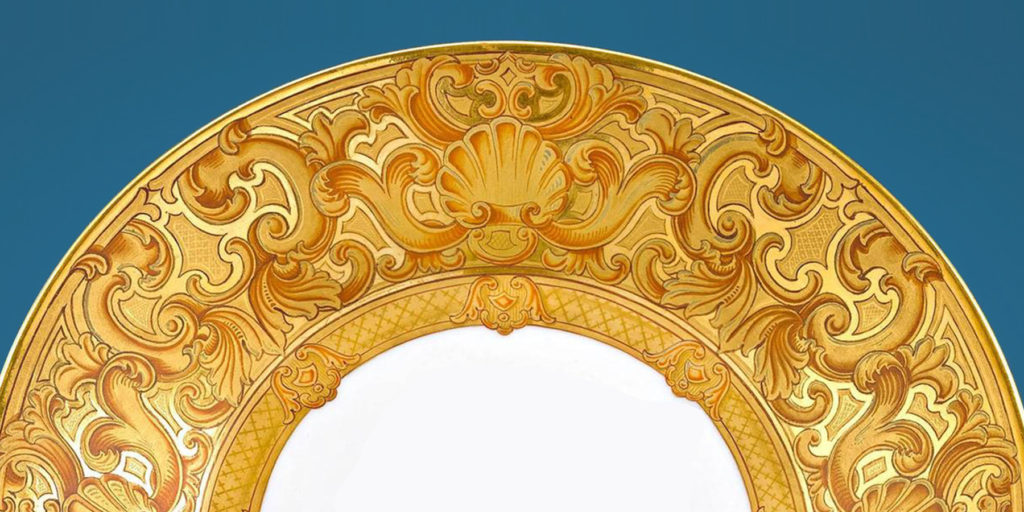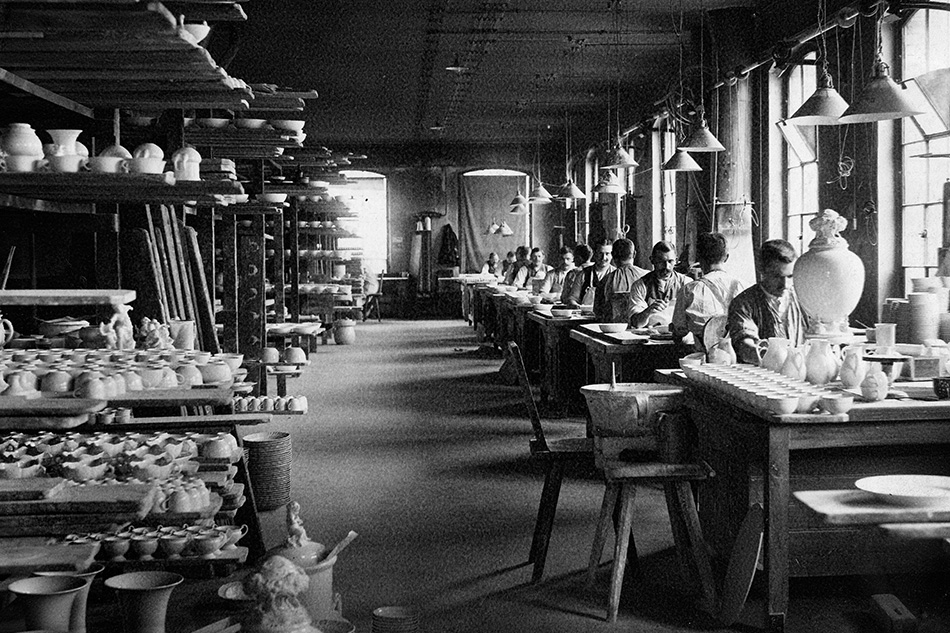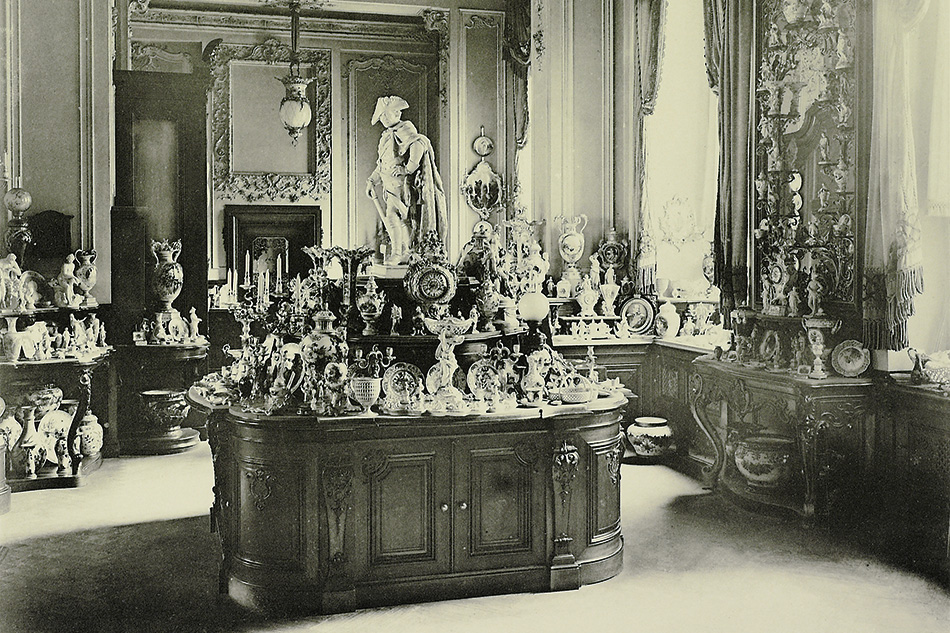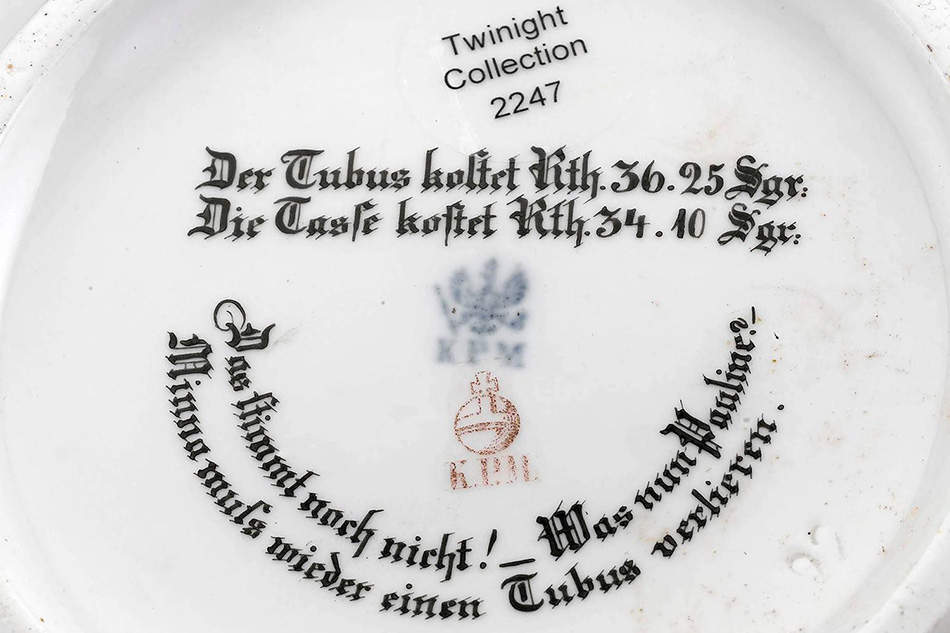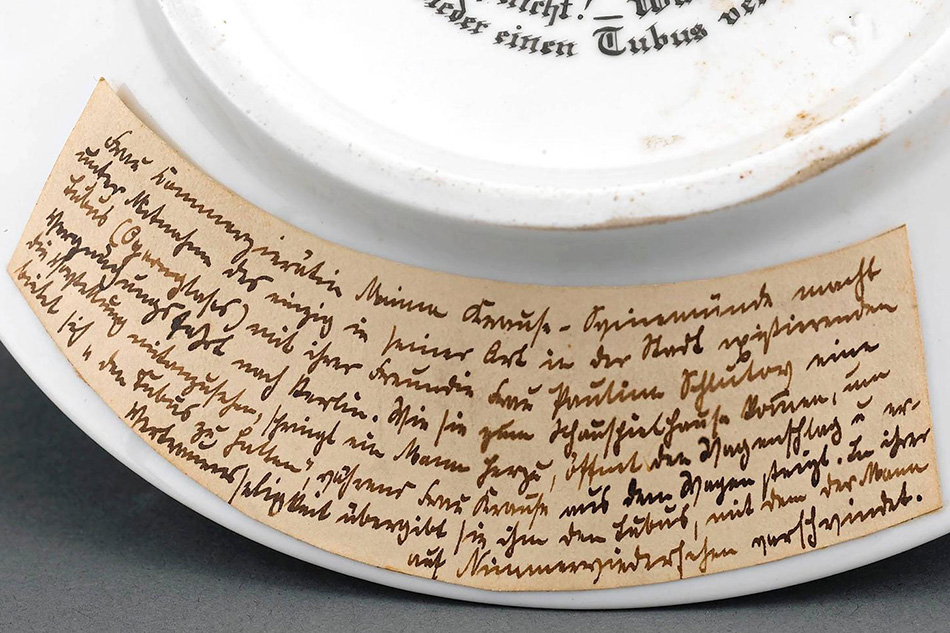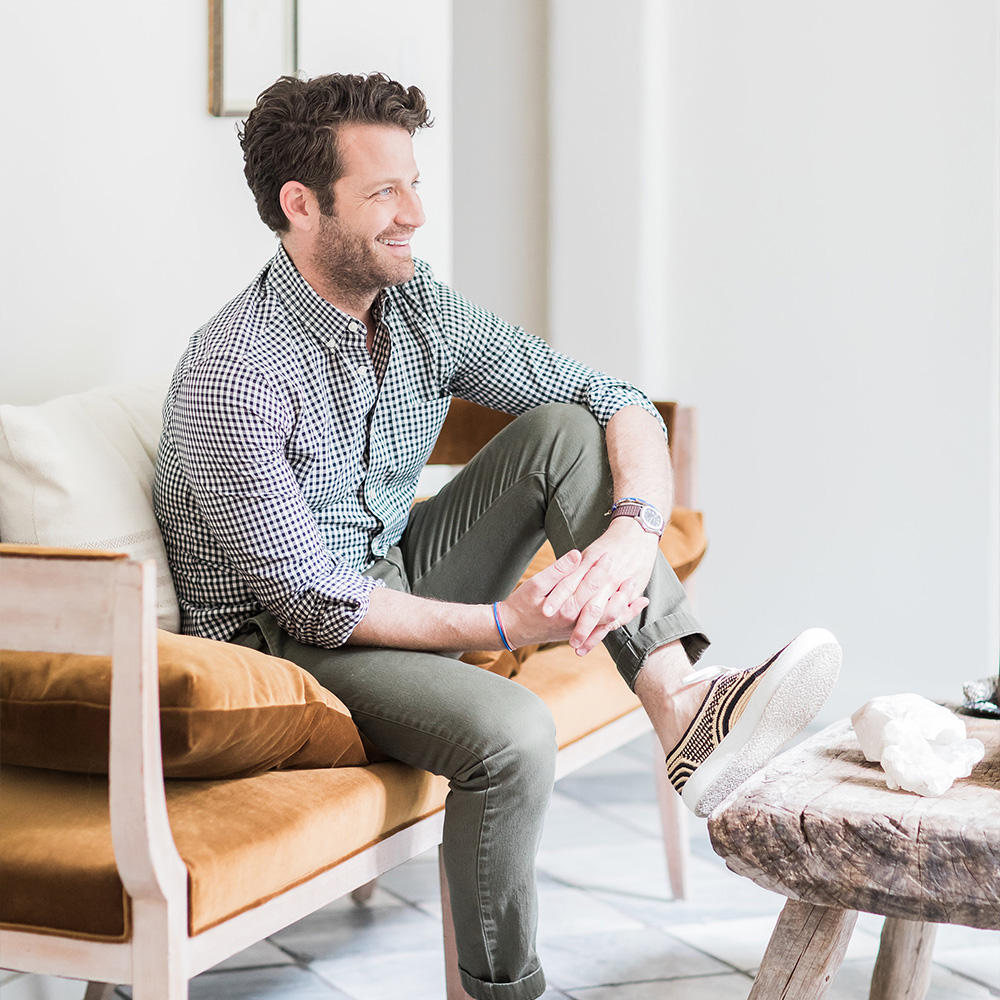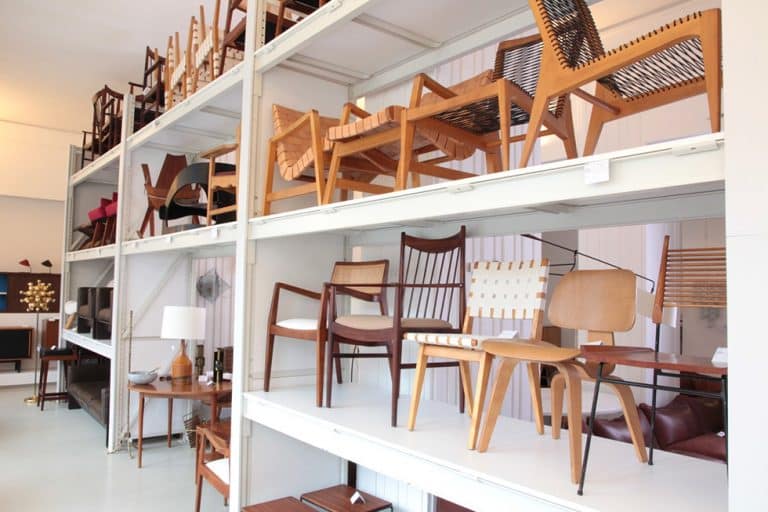
August 1, 2016This narrative cup and saucer set, created by KPM Berlin in the 1840s, tells the story of a woman whose borrowed opera glasses were stolen by a hat-tipping thief. Top: A closer look at the hand-painted saucer reveals its mint-condition detailing.
New Orleans shop M.S. Rau Antiques is selling an antique cup and saucer made of fine German porcelain with a great provenance and a wonderful backstory. Signed twice on the bottom, it is from the renowned KPM Berlin porcelain factory, which was founded by Frederick the Great in 1763 and continues to operate today. It is celebrated for the quality of its china and the fact that highly trained individual artists still paint the decorations on freehand, which makes every ornamented piece unique.
Rau’s antique gilded cup, with lion paw feet, is called a “narrative” cup because the painted decoration on it tells a story. An unknown person in Germany commissioned it sometime between 1844 and 1847. The colorful, beautifully detailed scene depicts a curious incident. It shows a woman descending from an elegant carriage in front of Berlin’s opera house. A gentleman on the street approaches the carriage to lend a supporting hand. As the woman steps down, she hands the stranger her opera glasses for safekeeping. Instead of giving her his arm, the gentleman apparently flees with her binoculars.
The painting in the center of the saucer, hidden when the cup is in place, is even more curious. The gentleman thief is tipping his hat (perhaps in triumph?), while above him floats, enlarged, the elegant opera glasses he stole.

The cup depicts a scene in which a seemingly kind stranger helps a woman out of her carriage only to abscond with her opera glasses.
William Rau, the third-generation owner of the gallery, which is known for the exceptional breadth of its inventory — from wonderful antiques to fine art to jewelry — and its large staff of experts, explains: “There is an undated sheet of letter paper glued to the back of the saucer that tells us the story in beautiful German script,” he says. “A lady in a rural village wanted to go to Berlin to see the opera. Her husband didn’t want to go, so she went with a friend. Their town was so small it had only one pair of opera glasses, and she borrowed it for her trip. Those are the opera glasses the man steals.”
Rau continues, presenting his theory about the commissioning of the cup and saucer: “I would guess it was a gentle poking of fun. This would have been a very expensive piece and was quite likely a gift from the family that lost the opera glasses to the lady who had borrowed them.” This seems to be verified by the writing on the saucer’s underside, which reads in part: “The opera glasses cost 36.35 Rth [Reichstaler currency]. The cup cost 34.10 Rth.”
CONDITION
The condition of the painting and the gilding is excellent. (With porcelain, perfect condition is key to value.) “KPM used the finest gold, and when we see it, it is usually worn off, but not here,” Rau says. “The set is in mint condition.”
RARITY
“What we cherish are the things that are beautiful that are the only ones in the world,” Rau says. “Being a commissioned set, it is unique. And it is stunning.”

The masterfully executed cup features a lion’s foot base and gold details.
PROVENANCE
The identity of the person who commissioned the set is less important to its value than that of its last owner, Richard Baron Cohen, a New Yorker who is considered one of the most important collectors of early-19th-century porcelain from the factories at Sèvres, Berlin and Vienna.
Beginning from scratch in 1994 and continuing for nearly two decades, the real-estate heir assembled a first-rate collection of pictorial porcelain, one of the largest in private hands. Most of the delicate vases, plates and other pieces have figurative decorations: exquisitely detailed and colorful paintings of royal palaces, personages, flowers and plants.
“Most porcelain collectors concentrate on porcelain from specific workshops, like Sèvres or Royal Copenhagen,” Cohen once told Forbes. “But I collect a period: the neoclassical period, from the late 1790s to 1830, with precision painting.” His collection includes a set of plates used by Lady Emma Hamilton, Admiral Nelson’s paramour, which reportedly cost Cohen $300,000, and 140 pieces of the so-called Service Forestier, a magnificent set of Sèvres plates depicting famous forests around the world, made in the 1830s and ’40s, which cost $900,000.

The cup and saucer were once owned by Richard Baron Cohen, an important collector of early-19th-century porcelain.
So famous was the set that in 1835, when the first 61 plates were finished, it was shown in an exhibition at the Palais du Louvre. Many pieces from another Forestier set, commissioned in 1850 by the Sultan Abdül-Medjid, are now in the museum of the Topkapi in Istanbul.
Part of Cohen’s collection has been shown at the Sèvres Museum outside Paris, the Charlottenburg Palace in Berlin,and at the Metropolitan Museum of Art, in the exhibition “Refinement and Elegance: Early Nineteenth-Century Porcelain from the Twinight Collection, New York,” which closed in spring 2009. (Twinight is the name of Cohen’s former estate on Oyster Bay in Long Island.)
In the past few years, Cohen has been divesting a small portion of the collection. He sold 60 (of about 3,000) pieces at Hôtel Drouot auction house in Paris two years ago. Rau recently bought another 20 from him.
“He is an amazing collector,” says Rau, a longtime friend. “He can tell you more about each piece than anyone on Earth. He has an encyclopedic memory. He has pieces that were made for a pope. He has one gold box made for Empress Josephine with a portrait of her by the great French painter Eugene Isabey and another box made for Napoléon.”
PRICE
Rau is asking $22,850 for the cup and saucer, less than Cohen paid for it years ago. How did he arrive at that price? “This is what a superb piece of antique KPM porcelain goes for today,” says Rau. “It’s unique.” And utterly charming. What other piece tells the story of a theft with such good cheer and masterful painting?
